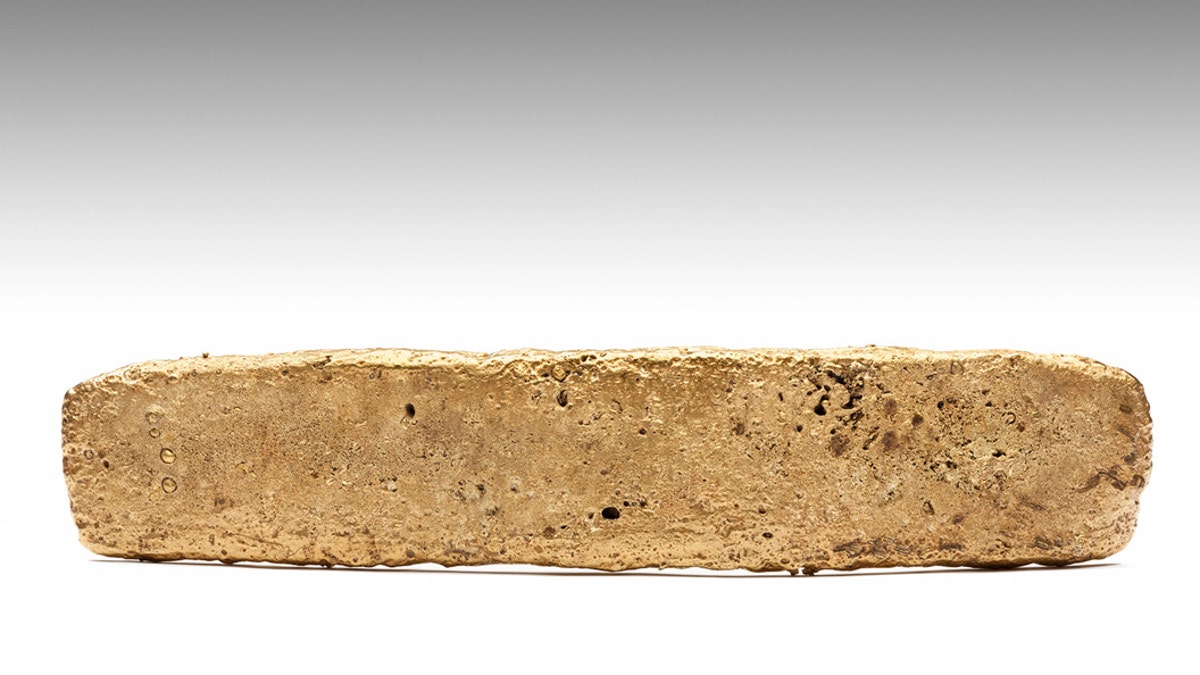Aztec treasure discovered at Mexico City construction site
There wasn’t much known about a 4-pound gold bar discovered during construction work in Mexico City nearly 40 years ago, but now experts are calling the precious metal an Aztec relic. The gold bar has been identified as a long-lost Aztec treasure that was stolen by Spanish conquistadors nearly 500 years ago.
Editor's note: A previous version of this story said the gold bar weighed 4,255 pounds. It weighs 4.25 pounds.
A 4-pound gold bar that was discovered during construction work in Mexico City nearly 40 years ago has been identified as a long-lost Aztec treasure that was stolen by Spanish conquistadors 500 years ago.
On June 30, 1520, Spanish conquistador Hernán Cortés and his group were attacked by the rebelling Aztecs, with Cortés ultimately stealing a trove of Aztec treasures, escaping Tenochtitlán (now Mexico City) with his life. The encounter, known as the "night of Sadness" in Spanish history, resulted in the deaths of many Spanish soldiers as their ship sank. The treasures they had stolen also sank, including the 4.25-pound gold bar, according to a statement from Mexico's National Institute of Anthropology and History (INAH).
The bar was discovered by a construction worker in 1981 on the route Cortés was believed to have taken. It was analyzed and determined that it was 76.2 percent gold, 20.8 percent silver and 3 percent copper, José Luis Ruvalcaba, of the Institute of Physics of The National Autonomous University of Mexico, said in the statement.

The 4.25 pound bar gold bar. (Credit: Digital archive, MNA-INAH-CANNON)
DISCOVERY OF GRISLY AZTEC WAR SACRIFICES COULD LEAD TO LONG-LOST EMPEROR'S TOMB: REPORT
At present spot gold prices, the bar would be worth approximately $99,200.
The composition of the bar matched the other gold pieces that were discovered by an INAH excavation of the main temple in Tenochtitlán, making it likely the giant gold bar also belonged to the Aztecs, the statement added.
The gold that was found at Templo Mayor also matched gold pieces around the monolith of the goddess Tlatecgutli that were discovered at the temple, LiveScience reports.
"If these values are compared with those recorded in the graph of Mesoamerican geographical areas of use, we will realize that the ingot is located within the group of pieces recovered by the Templo Mayor Project," Ruvalcaba noted.
GRUESOME HUMAN SACRIFICE DISCOVERY: SKULLS REVEAL GRISLY SECRETS OF LOST AZTEC CITY
Ruvalcaba continued: "Even more interesting is that it is perfectly located in the region occupied by our later pieces, those of stage VI (1486-1502 AD), and particularly those found around the monolith of the goddess Tlaltecuhtli, as it is the case of offerings 122, 123,125 and 149. The above is significant, since the ingot would have been cast between 1519 and 1520 AD.”
In a separate discovery, archaeologists discovered the first-ever Aztec royal tomb, finding an array of sacrificial remains during an excavation at the base of the Templo Mayor temple site in downtown Mexico City in 2019.
Other grisly discoveries have been revealing aspects of the Aztecs’ bloodthirsty culture. A vast array of skulls buried at the Templo Mayor, for example, offers a chilling glimpse into Aztec human sacrifice.
In 2012, archaeologists announced the discovery of the skeleton of a young woman surrounded by piles of 1,789 human bones in the Templo Mayor.
CLICK HERE TO GET THE FOX NEWS APP
Fox News' James Rogers contributed to this story.

